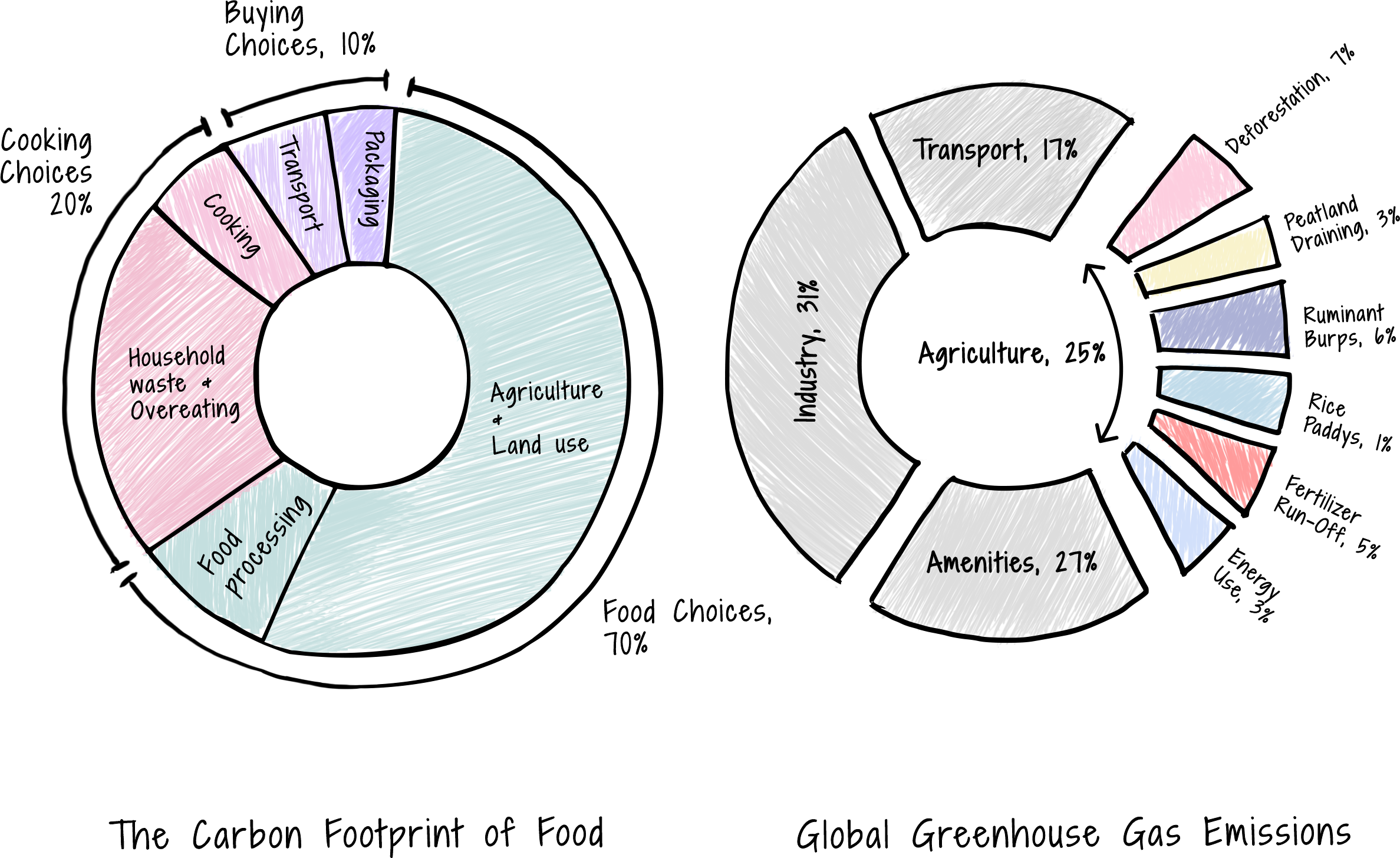Good for the Planet
Agriculture is responsible for one quarter of all global greenhouse gas emissions. Half of agricultural emissions come from the carbon dioxide released when forests are cut down to make way for expanding agricultural land. The other half from excess fertilizer use, cow and sheep burps, and the burning of fossil fuels for farm equipment, refrigeration, and transport.
To avoid the worst impacts of climate change agriculture must reach net-zero by the middle of this century. We must eliminate ongoing agricultural emissions and reverse the expansion of farmland.
Some of the required changes (such as improving production yields, reducing supply chain waste, and low carbon farming techniques) must be driven by governments and the farming industry. But individual changes will also play a large role in decarbonizing agriculture through our everyday eating choices:
Food Choices: The type of ingredients you eat have the biggest impact on the carbon footprint of the food system. Food choices influence the emissions from land-use, farming, and food processing which together account for 70% of the carbon footprint of our food.
Meat products have the highest carbon footprint owing to the large area of land needed to rear animals. In fact, two thirds of all agricultural land is used for animal grazing and just one third is used for growing crops (half of which are then fed to animals). Yet, despite the meat industry using nearly one quarter of dryland on planet Earth, meat provides just 20% of our daily calorie intake.
Beef and lamb have the highest carbon footprint of all foods because cows and sheep have a unique way of digesting food that releases large quantities of methane - a particularly potent greenhouse gas. The methane from cows and sheep alone accounts for 5% of all global greenhouse gas emissions - that’s nearly as much as deforestation.
Fish: Emissions come from the diesel burnt to power the boats, destruction of the ocean floor during bottom trawling, and in processing and transporting the fish. Always opt for locally-sourced, sustainably certified fish caught by handline, pole and line, or troll fishing where possible.
Plant-based products have the lowest carbon footprint - grains, rice, vegetables, and fruit require less land, less processing, and create less waste. Field-grown, seasonal, locally sourced plant-based products have the lowest footprint of all.
Cooking Choices: Food waste and the energy used during cooking accounts for 20% of the carbon footprint of food. Reducing waste, particularly in the higher emissions ingredients, is very important. Reducing food waste also ties into the importance of portion control for a healthy lifestyle. The way you cook food generally has a smaller impact on carbon emissions but moving away from natural gas and towards electric cooking equipment supports decarbonization efforts and eliminates the harmful air pollutants released into your kitchen from burning natural gas.
Buying Choices: It may come as a surprise but the transportation, refrigeration, and packaging of food account for just 10% of the total carbon footprint. Buying locally sourced, seasonal produce with sustainable packaging helps support efforts to decarbonize the food system - but don’t forget it’s the type of food we eat which has a far bigger impact on fighting climate change.




